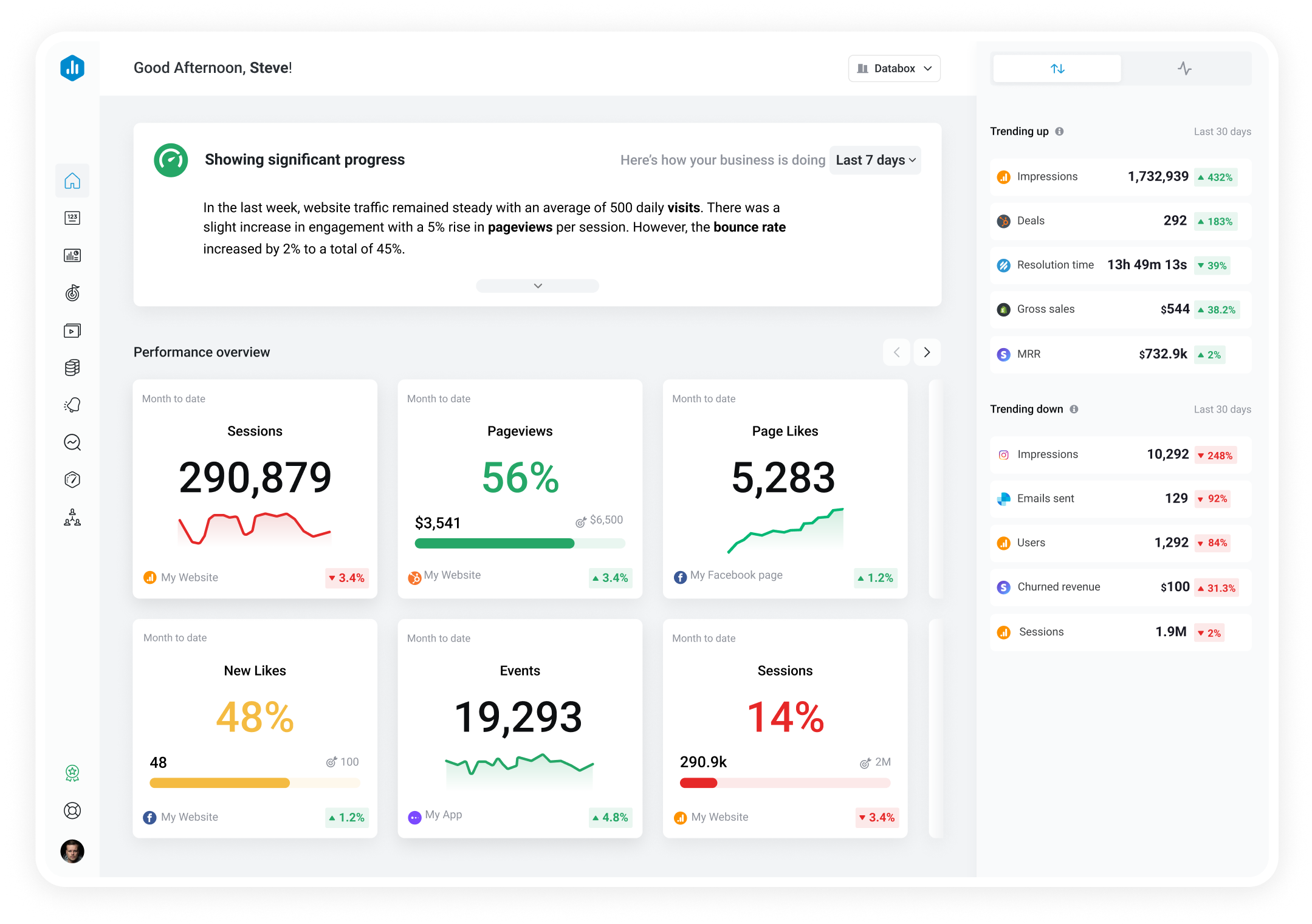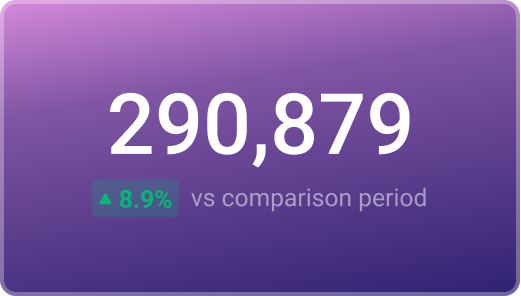Track all of your key business metrics from one screen
GET STARTED
 HubSpot Marketing
New Opportunities
HubSpot Marketing
New Opportunities New Opportunities metric in HubSpot measures how many new potential customers or sales leads have been created within a specified time period.
With Databox you can track all your metrics from various data sources in one place.

Used to show a simple Metric or to draw attention to one key number.
Databox is a business analytics software that allows you to track and visualize your most important metrics from any data source in one centralized platform.
To track New Opportunities using Databox, follow these steps:
 Goals
Goals Scorecards
Scorecards Metric Digest
Metric Digest Metric Builder
Metric Builder Data Calculations
Data Calculations Performance Screen
Performance ScreenUse this dashboard template to view ratios between current traffic, leads, marketing qualified leads, deals, and customers.


